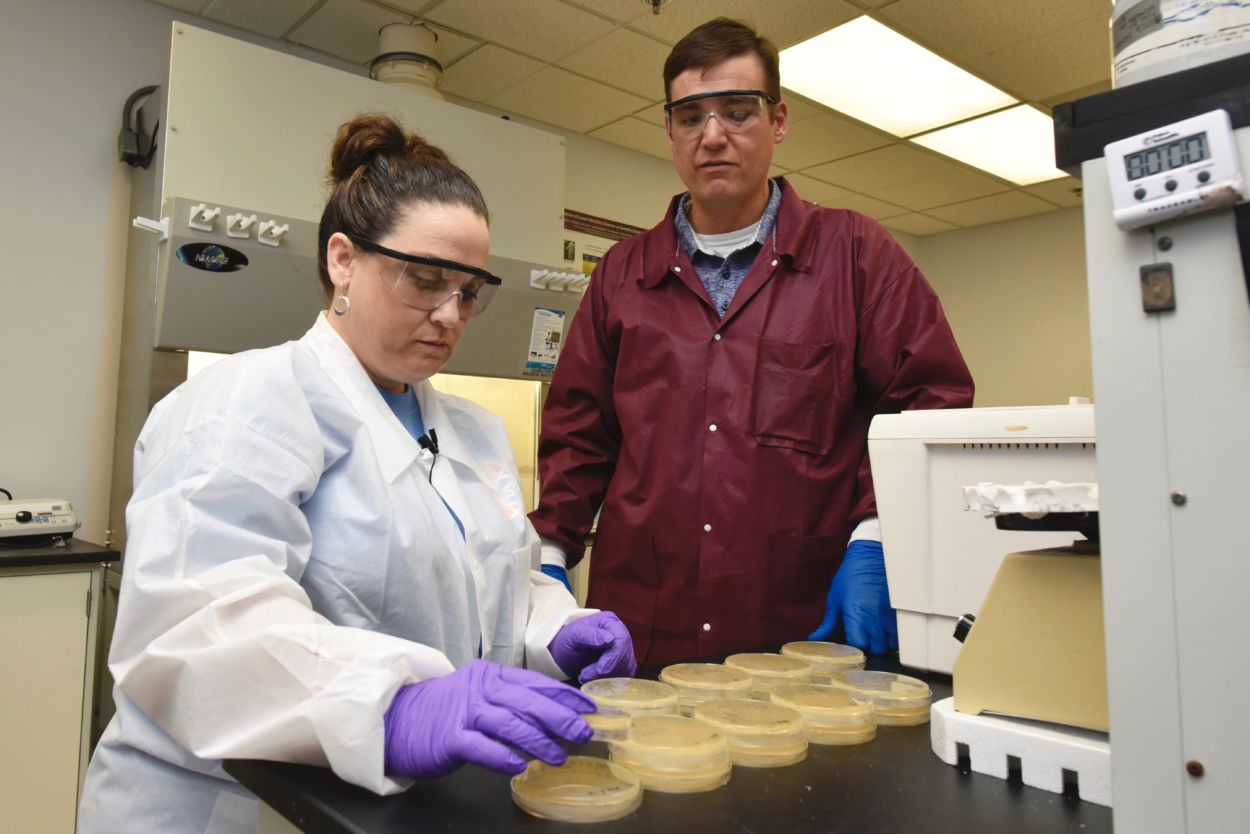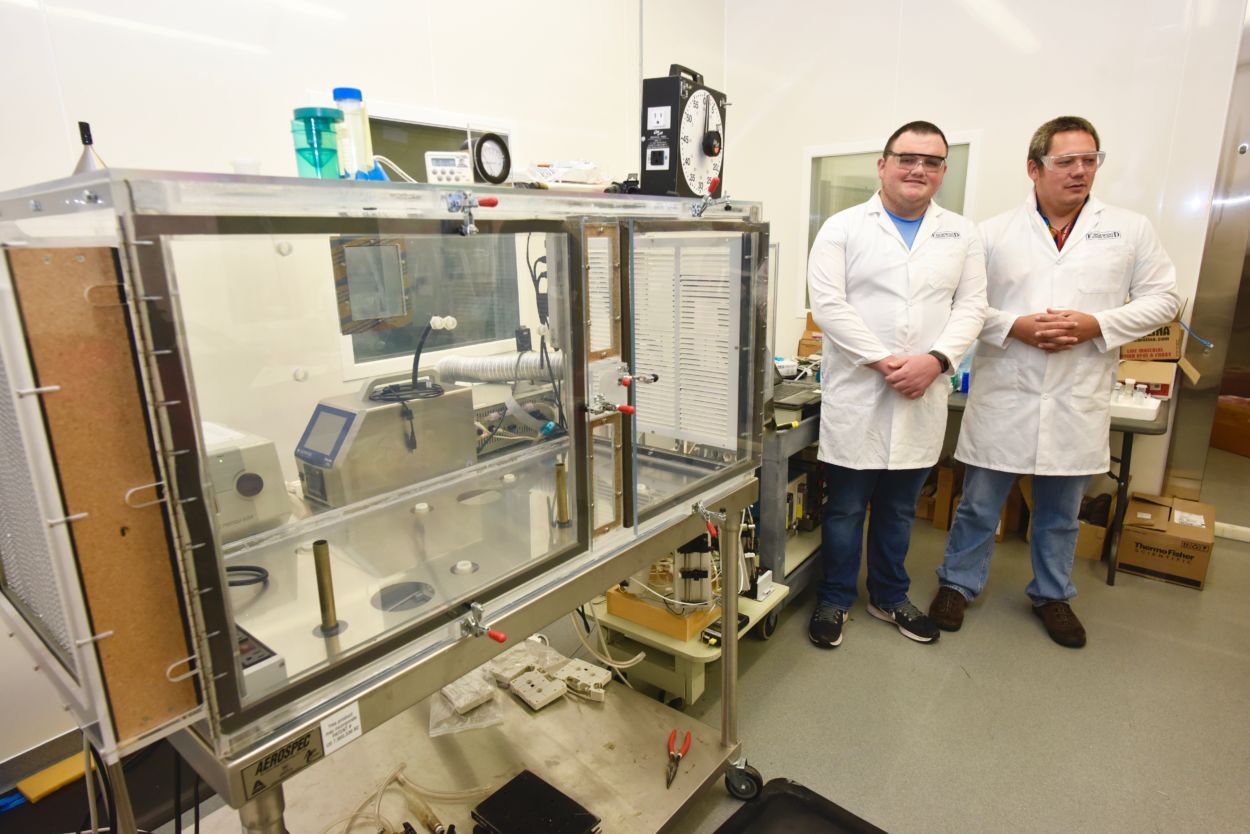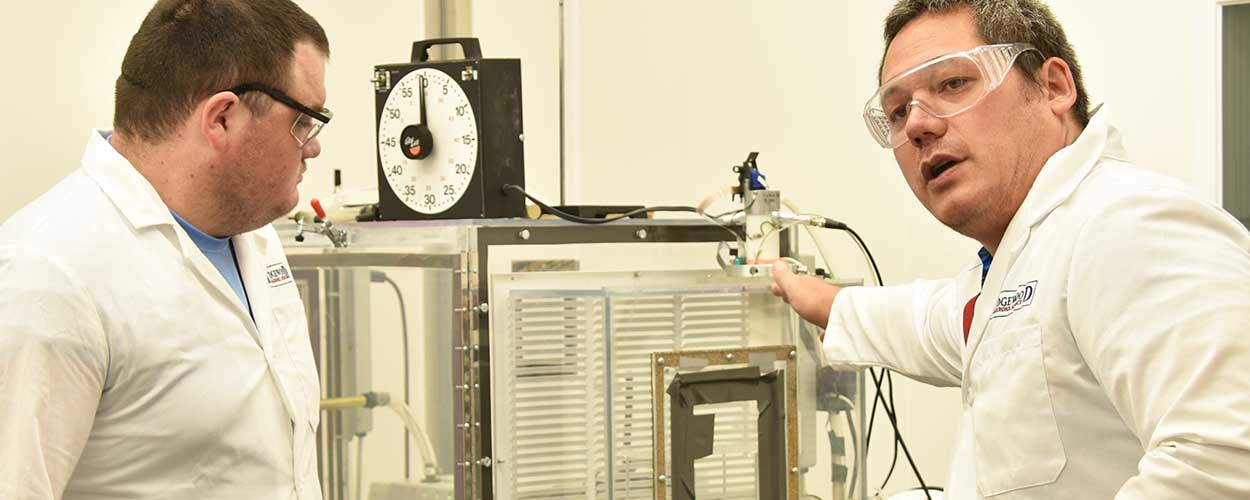Science Teachers Work Alongside Army Researchers to Hone Laboratory Skills
Science Teachers Work Alongside Army Researchers to Hone Laboratory Skills
Shawn Nesaw
June, July and August – That’s the answer to a quip about the best parts of being a teacher.
While some teachers certainly take off to recharge their batteries each summer, for some, there is no academic off-season and for a choice few, part of their summer vacation included a trip to the U.S. Army Research, Development and Engineering Command Edgewood Chemical Biological Center (RDECOM ECBC) at Aberdeen Proving Ground, Maryland.
The Joint Science and Technology Institute is a residential research experience, funded by the Defense Threat Reduction Agency (DTRA). The two-week Science, Technology, Engineering and Mathematics (STEM)-intensive program at the RDECOM ECBC took teachers out of the classroom and into the labs for the opportunity to experience real-world laboratory science and gain practical knowledge they can take back to their schools and apply in their lessons with students.
Six teachers from around the country worked side-by-side with research scientists at the Center on a variety of experiments such as aerosol detection, biological sample collection and mass spectroscopy.
Joan Rome, a high school chemistry and biology teacher at Hahnville High School in Boutte, Louisiana worked with research biologist Daniel Angelini, Ph.D., on an environmental surface sampling project.
“Joan had the opportunity to see applied science in the lab and work through the full scientific process – design, preparation, execution, analyzation and write up,” explained Angelini. “The environmental surface sampling experiment Joan worked on ultimately applies to the warfighter, but basic components have beneficial application in the classroom for students.”
Rome came across the opportunity through a friend towards the end of the school year. She applied but was put on a waiting list. Lucky for her, days later she received her official acceptance and invitation.
“It was a very eye-opening experience, one I will cherish for the rest of my life,” Rome reflected. “My job is to prepare students for higher-level science applications, and this experience has given me new tools and ideas for use with students.”

The DTRA teacher mentor program is a huge benefit to teachers but also to scientists and the Center.
“Overall, the program conveys the real-world experience and translates to the classroom,” Angelini said. “Teachers reach a wide audience of students, so by providing real-world laboratory experiences to teachers like Joan, we ultimately reach those students through her lessons during the school year.”
Rome plans to use what she’s learned at RDECOM ECBC to meet Next Generation Science Standards, a new set of research-based science standards developed by states to improve science education for all students. Rome’s home state of Louisiana is one of more than 20 states that have adopted these new science standards.
“Experiment design is a critical component for scientists so it’s one of many things I’m aiming to incorporate into my lessons more frequently to prepare students for undergraduate education,” Rome said.
In another RDECOM ECBC facility, research chemist Jerry Cabalo, Ph.D., mentored Tyler Dufrene, a fourth-year chemistry teacher also from Louisiana, in the study of biosensors. Cabalo worked with Dufrene on the testing of an Army-developed sensor alongside a similar, ally-developed sensor. Dufrene helped generate biosimulant aerosol and analyzed the data from the Army-developed sensor with Cabalo guiding him throughout the process.
Dufrene also learned about fluorescence spectroscopy and how it is used in the detection of bioaerosols. Together, they developed ideas for classroom demonstrations of important chemical processes, such as explosions. These ideas are meant to inspire high school students to continue with careers in the STEM professions.
Developing ideas for classroom demonstrations of important chemical processes will help Dufrene answer the all-important student question, “Will we ever use this in real life?” once the school year gets underway.
The program was an amazing experience for Dufrene. Besides learning about ongoing research pertaining to the safety of the warfighter, Dufrene had opportunities at the RDECOM ECBC he would likely not have experienced otherwise.
“I learned how to conduct higher-level experiments in a scientific and professional manner as well as refine my laboratory skills and research methods so that I can improve instruction in my classroom,” explained Dufrene. “Interacting with distinguished scientists provided me with a newfound perspective on research and STEM.”
Cabalo sees the DTRA program as more than just a teacher mentor program but a means of inspiring future generations of scientists.
“Teachers who participate in the DTRA program are helping America maintain the technological edge by taking their experiences here and sharing them with their students, ultimately inspiring the next generation of STEM professionals,” Cabalo explained. “The technological edge helps preserve the lives and health of the warfighters who defend our nation so the need for more STEM professional is critical.”

Jerry Cabalo, Ph.D. and high school teacher Tyler Dufrene work with an aerosol test chamber.

